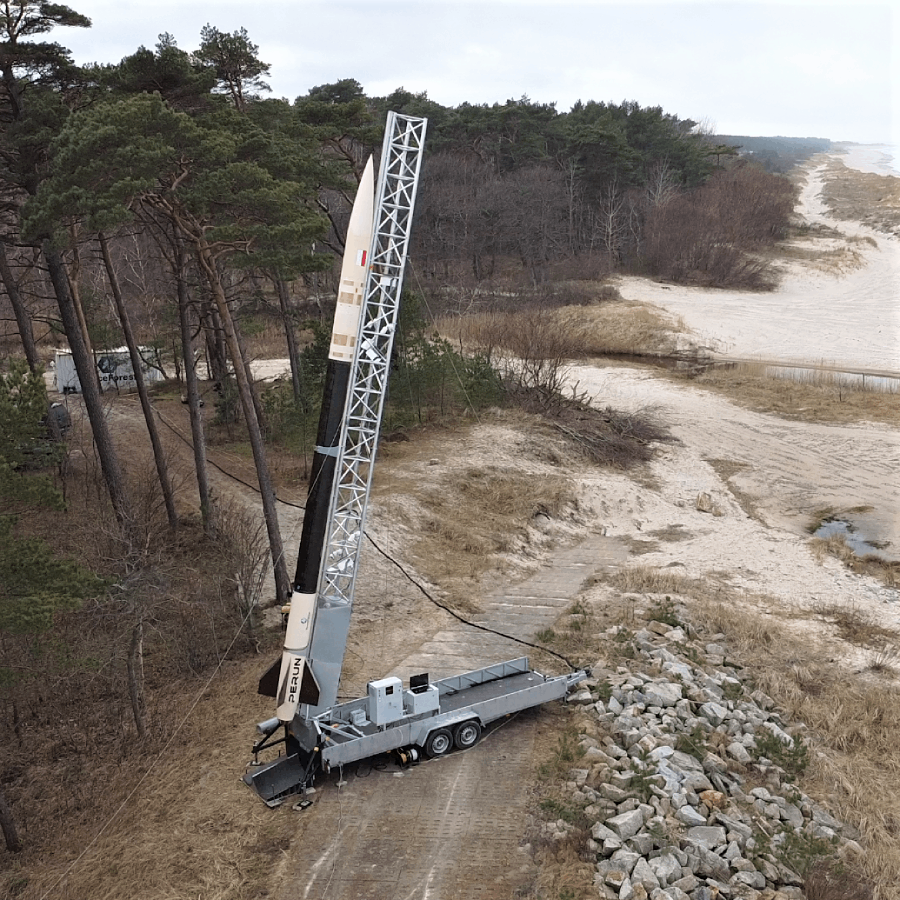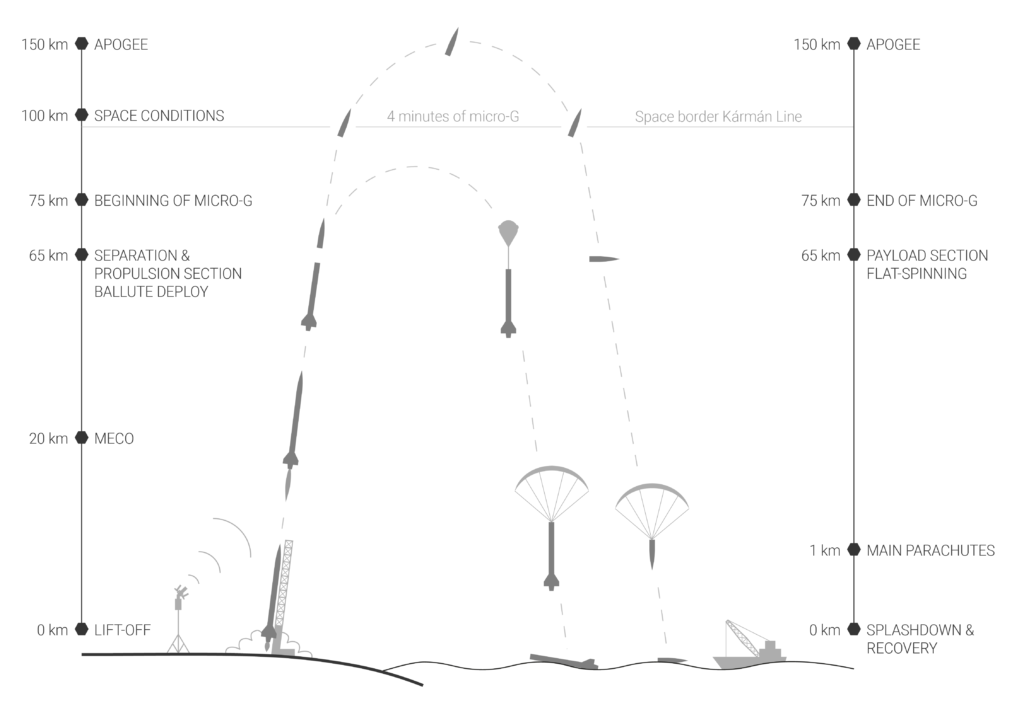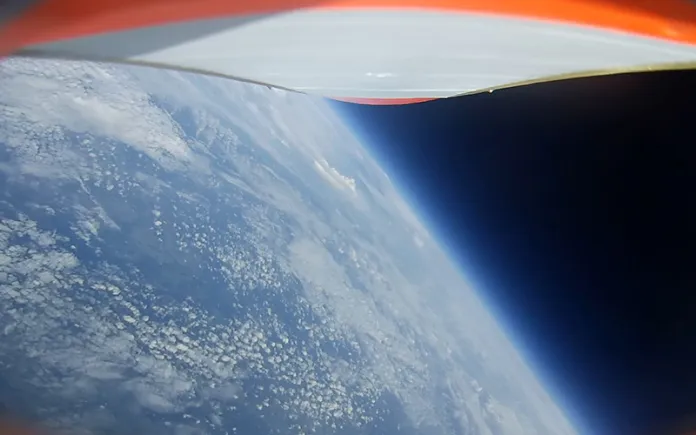On June 21, the Polish company SpaceForest carried out the first launch of the PERUN suborbital rocket. It managed to reach an altitude of 22 km.

The PERUN rocket is designed to conduct experiments in microgravity. It has a single-stage design and is launched from a mobile platform. Its length is 11.5 meters, diameter is 0.45 meters and take-off weight is 970 kg. Composite materials are widely used in the rocket design, and the SF 1000 hybrid engine running on modified paraffin is used as a power plant.
PERUN can take up to 50 kg of cargo to a height of 150 km. According to SpaceForest, the delivery cost of 1 kg is USD 5,000. After the flight is completed, the stage and payload compartment return to Earth by parachutes and are put into the Baltic Sea, after which they can be reused.

Initially, the launch of PERUN was supposed to take place on June 19, but in the end it was postponed to June 21. The goal of the debut flight was to reach an altitude of 50 km. However, an anomaly was detected during the flight, as a result of which it was decided to terminate it early. After the engine was turned off, the stage and the payload unit were successfully splashed and lifted by the ship. The maximum height reached was 22 km.

According to SpaceForest, during the next launch of PERUN, it is planned to retest the lifted stage. The new flight should take place before the end of this year.
PERUN is not the only SpaceForest project. The company is also part of the team developing the Themis reusable launch vehicle demonstrator for ESA. It is developing the GFCS (Green Flip Control System) system, which is an auxiliary rocket engine responsible for performing the “flip” maneuver before returning the stage to Earth.
According to https://europeanspaceflight.com
Follow us on Twitter to get the most interesting space news in time
https://twitter.com/ust_magazine
